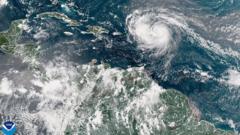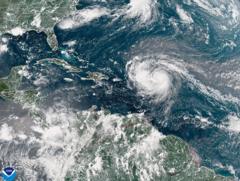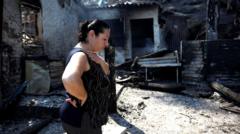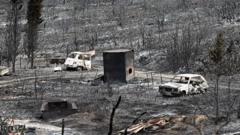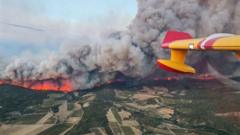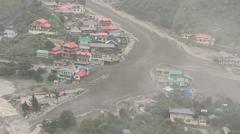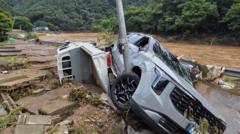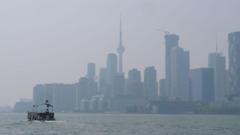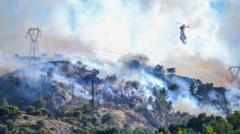The storm is impacting the southeastern Bahamas and the Turks and Caicos, leading to mandatory evacuations as the hurricane gathers strength.
**Hurricane Erin Intensifies: US East Coast Braces for Impact**

**Hurricane Erin Intensifies: US East Coast Braces for Impact**
Hurricane Erin has evolved into a ferocious Category 4 storm, threatening the US East Coast with perilous waves and dangerous conditions.
Hurricane Erin has escalated to a Category 4 storm and poses significant risks of life-threatening surf and rip currents along the US East Coast. The storm's rains have already begun impacting the southeastern Bahamas and Turks and Caicos, with tropical storm warnings issued for the affected areas. While Erin is not expected to make direct landfall on these islands, it could deliver up to six inches of rainfall, raising concerns about flooding and safety.
Previously classified as a Category 5 hurricane, Erin has experienced fluctuations in intensity. It left over 150,000 Puerto Ricans without power due to fierce winds damage to electricity infrastructure. Fortunately, quick emergency repairs have restored power to about 95% of those affected, according to local energy company Luma.
As the storm's outer rain bands begin to make contact with the Bahamas, authorities have advised residents to remain vigilant and prepare for potential shelter needs. Aarone Sargent, Managing Director of the Bahamas’ Disaster Risk Management Authority, emphasized the unpredictable nature of hurricanes and the need for locals to identify nearby shelters.
The National Hurricane Center (NHC) forecasts Erin to skirt east of the southeastern Bahamas today and continue between Bermuda and the US eastern shore mid-week. Despite slight weakening, the NHC warns that Erin is still a large and dangerous hurricane. In anticipation of the storm's impact, North Carolina's Outer Banks have initiated mandatory evacuations for Hatteras Island, as officials caution that main highways could become unpassable. Additionally, hazardous rip tides have been warned for the entire US East Coast, raising alarms about safety amongst beachgoers.
Previously classified as a Category 5 hurricane, Erin has experienced fluctuations in intensity. It left over 150,000 Puerto Ricans without power due to fierce winds damage to electricity infrastructure. Fortunately, quick emergency repairs have restored power to about 95% of those affected, according to local energy company Luma.
As the storm's outer rain bands begin to make contact with the Bahamas, authorities have advised residents to remain vigilant and prepare for potential shelter needs. Aarone Sargent, Managing Director of the Bahamas’ Disaster Risk Management Authority, emphasized the unpredictable nature of hurricanes and the need for locals to identify nearby shelters.
The National Hurricane Center (NHC) forecasts Erin to skirt east of the southeastern Bahamas today and continue between Bermuda and the US eastern shore mid-week. Despite slight weakening, the NHC warns that Erin is still a large and dangerous hurricane. In anticipation of the storm's impact, North Carolina's Outer Banks have initiated mandatory evacuations for Hatteras Island, as officials caution that main highways could become unpassable. Additionally, hazardous rip tides have been warned for the entire US East Coast, raising alarms about safety amongst beachgoers.


